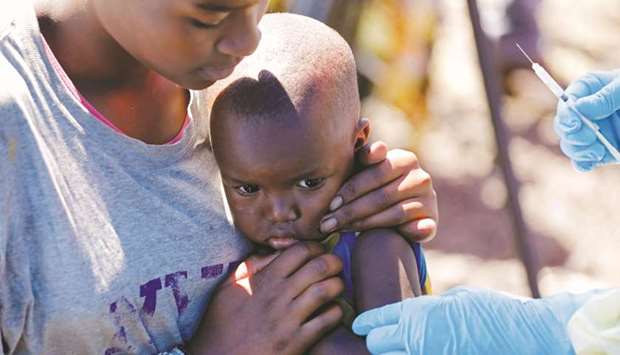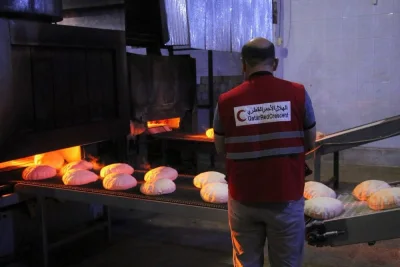Two people and a child were killed yesterday in a town in eastern DR Congo when police opened fire at a protest over poor security, a local official told AFP.
“There was a demonstration in which three people have just died — a young man of about 25 who was shot in the abdomen and died in the hospital, a Pygmy who was shot and died immediately, and another child who was shot and also died,” said Donat Kibwana, chief administrator for the Beni region.
The incident happened in Oicha, a town about 30km north of the city of Beni.
Beni is the capital of the Democratic Republic of Congo’s North Kivu province, where murder, extortion and other crimes are rampant.
The region, which is also struggling with an epidemic of Ebola, is in the grip of militias who have killed hundreds of people over the last five years.
The Oicha protest came a day after an attack attributed to a Ugandan Muslim militia called the Allied Democratic Forces (ADF) in which two people were killed.
Noella Katongerwaki, a representative of grassroots groups in the Beni region, said: “The police dispersed the protesters with live rounds and teargas. Right now, the toll is three dead, including a Pygmy woman.”
Another activist, Janvier Kasairio, said ordinary life in Oicha had “stopped” yesterday.
“We call on the army to do its job. We don’t understand why our army can’t provide security for us against the ADF.”
The police said some protesters at yesterday’s rally had been carrying weapons.
“We saw young people suddenly appear on the street, others barricaded the main road, we dispersed them but some were armed,” said Beni police chief Umbi Azalendanya.
“Two are already under arrest for possession of a firearm,” he told AFP.
Provincial deputy Jean Paul Ngahangondi said the police should have supervised the protesters instead of killing them.
“We cannot kill citizens because they protest, it is unacceptable,” he said. “We demand investigations so that the killer police officers are judged.”
The home of a police officer accused of shooting the young man was set fire by angry residents.
Protesters at a rally further south in the city of Butembo set fire to tyres and blocked off a road, but police dispersed them without any damage caused, witnesses told AFP.
Eastern DR Congo has been riven by insecurity for 25 years.
Just last week a report by Human Rights Watch and the Congo Research Group said that more than 130 armed groups in the country’s North and South Kivu provinces killed 1,900 civilians and abducted 3,300 over the last two years.
Ebola spreads to remote, militia-run Congo territory
Authorities in the Democratic Republic of Congo have confirmed a new case of Ebola in the remote, militia-controlled territory of Walikale, hundreds of kilometres away from where previous cases near the border with Uganda and Rwanda occurred, the Health Ministry said overnight.
Pinga, the village where the case was reported, lies about 150km northwest of Goma, one of the towns affected by the Ebola epidemic, and much further away from the epicentre of the epidemic in Butembo and Beni.
The ministry data also showed a third case confirmed in South Kivu region, which on Friday reported its first cases, more than 700km south of where the first case was detected.
The widening geographic spread of the virus, and its presence in yet another zone under the sway of armed groups, raises the risk of it spreading out of control, even while the technical tools to rein it in are better than ever.
Walikale is controlled almost entirely by a Mai Mai ethnic militia, surrounded by forest and difficult to access because of poor roads.
Ebola has killed at least 1,900 people in Congo over the past year, the second biggest toll in the disease’s history, after a 2014-16 outbreak in West Africa that killed 11,300 people.
Unlike during that outbreak, there are now major medical advances that have helped fight the disease, including two trial vaccines, both of which are being deployed, mobile treatment units and experimental treatments that show the promise of a 90% survival rate.
But public mistrust and rampant insecurity in parts of east Congo where there are a plethora of armed groups and criminal gangs left over from two major wars in the late 1990s have hampered the response.
The hemorrhagic fever, first discovered in Congo in 1976, spreads through direct contact with body fluids and typically kills roughly half of those it infects.
The mortality rate is closer to two thirds during the current outbreak because so many victims have failed to seek treatment.

A health worker administers the Ebola vaccine in Goma.


